Democracy 3.0: A science-fiction story about what comes next in America
Today is the day we switch the system on.
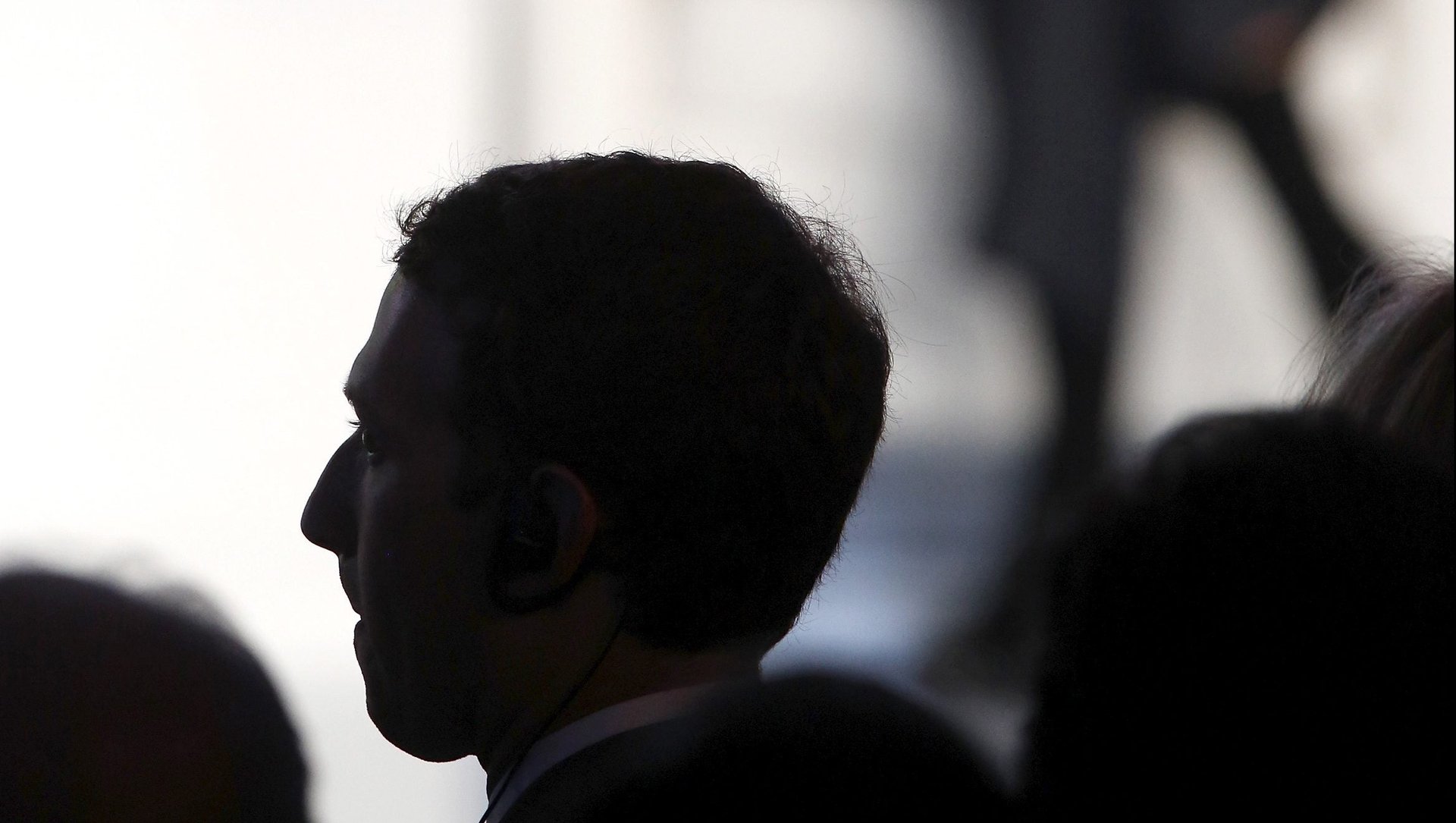

Today is the day we switch the system on.
Am I nervous? Of course I am. There could be indexing failures, field mismatches, table schema conflicts, a Russian hack… I’m kidding. We know how to build these things. We built the biggest one in the world, remember. As the last incumbent would have said—”Nobody builds them like us, believe me.” Still. It’s a momentous moment, or whatever. The day we hand over the keys… or the keys are handed to us. Actually, both.
“He said to go in whenever you’re ready,” his secretary tells me. I nod my thanks and push on the funny curved door that leads into the Oval Office. He’s at the Resolute desk, which he’s had carefully restored to remove the gold leaf. He’s making complex, balletic hand gestures, as if conducting a tiny, invisible orchestra on the surface of the wooden desk. If you didn’t notice the unusual thickness of his glasses, and the small black slab discreetly embedded in the desktop, you’d think he was practicing some kind of finger tai chi, or losing his mind. At first I think he’s flipping through reports or trade figures, but he has that look that I’ve spent years getting to know—the calm, focused, critical expression that means he’s product-testing. It’s not what he’s reading that interests him; it’s how he’s reading it.
“How’s the interface?” I ask, to get his attention.
He looks up and grins, and I notice how the grin etches sharp lines into his face. He’ll be 40 this year, the wunderkind finally reaching middle age, and the job has been hard on him—the basic income riots, the Saudi-Iran war, the Marburg pandemic, and the hurricane season of ’21, his first year in office, when there was still no FEMA and half of Florida was underwater. If he had seemed to enter a new phase of adulthood during the Trump years, now it’s as if he’s done so again. He moves more carefully, deliberately, as if consciously reminding himself that he mustn’t move fast and break things anymore, because now the things he breaks can’t always be put back together. But still, there’s the old Mark grin, wide and optimistic, the grin that says nothing is ever that terrible or that hard to accomplish.

“It’s awesome,” he says. “I just graphed mentions of Wahhabism in all the President’s Daily Briefs since 9/11. There are a couple of weird spikes that I think are just OCR errors. But it took me, like, ten seconds.”
I smile. I don’t know what Mark will learn about Wahhabism by graphing how often it crops up in intelligence reports, but I also know—have known since I joined him in the early days—that this is how he relates to subjects he doesn’t understand. He marshals them into an order, any order, even if it’s something completely spurious to the issue. It lets him feel in control; it creates an element of predictability. Then he can attack the topic and wear it down until it yields. It always does.
His eyes flick to the manila folder I’m holding, and then back to me. He raises his eyebrows in a question, and I nod. His grin doesn’t waver, but his eyes are more serious now. “Momentous moment,” we say simultaneously, and laugh. He holds out his hand for the folder, while the other reaches into his suit pocket for a pen.
ƒ
Strange to think now that it’s been only seven years since Mark got the idea of being president. Until that moment, the idea of a 30-something going straight from Facebook CEO to the White House would have been crazy. Then Trump got elected and nothing was crazy anymore. People guessed right away when Mark said he was going to tour all 50 states and then hired the guys who helped Bush and Obama get elected. Still, I don’t think anyone fully believed it at first. Much less that he’d win in 2020 with an unprecedented electoral-college margin and the highest voter turnout ever recorded.
Of course, Trump made it easy for Mark. He had broken down the biggest taboo—having a president who’s never held elected office. And then, of course, there was the shitshow that ensued. Obviously, Trump wasn’t really the one governing, nor was he the first president to play figurehead while other people pulled the strings. But after four years people were just tired. It wasn’t only the egregious things, the wall and the trade war with China and the price swings and abortion curbs and voter disenfranchisement and the blatant, endless corruption and influence-peddling. It was the sheer wearying noise of it, the anger and the yelling on all sides, like when you’ve had the TV on too loud for hours and you just want to switch everything off and lie down somewhere quiet and stare at the ceiling.
That quiet, calm place was Mark. Also a businessman and political outsider, also a white guy, also Christian—and I totally believe that, I don’t think he’d be capable of faking faith—but half Trump’s age. And the opposite of him in every other way. Of course he appealed to a huge swathe of the liberals, plus enough of the conservatives. (And Ben Carson as VP was an inspired choice—you get more of the black vote and the conservative vote, with, like, zero risk that a president in his thirties is going to keel over and leave the veep running the show.)
Plus, Mark had the media. I don’t mean “had” in the sense of “owned”, even though by then the offspring of the Facebook Journalism Project had directed pretty much all the digital revenue dollars and a lot of the TV through Facebook. I mean it in the sense that after four years of Trump, of his endless verbal abuse, of subpoenas and FBI searches, of legislative attempts to curb the First Amendment, and of occasional press conferences that were more like Roman amphitheaters, encountering a presidential candidate who never got angry, never made threats, and (almost) never so much as got a fact wrong, let alone told outrageous lies without blinking, was, for the media, like dying and going to heaven.
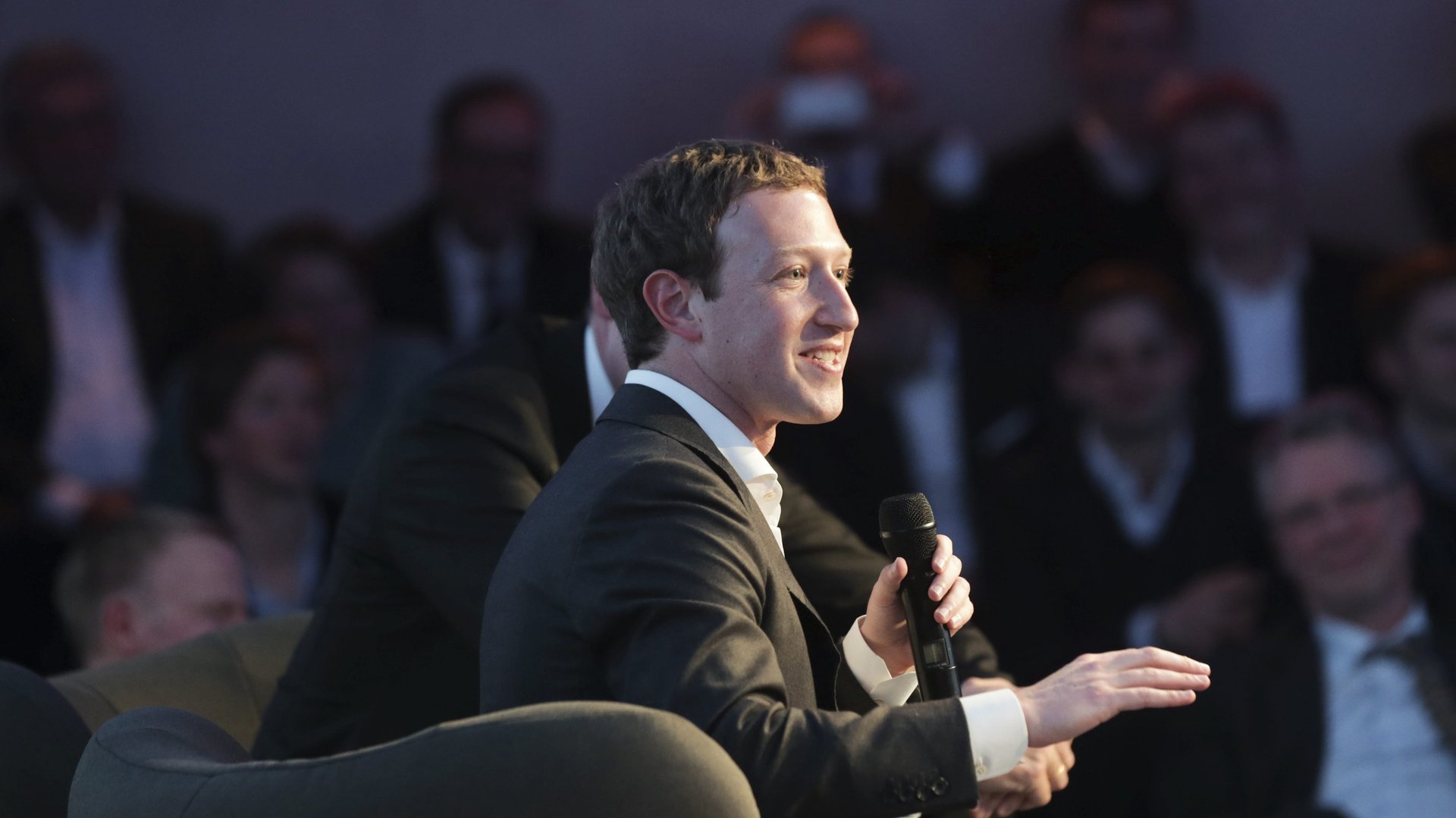
I went to a few of Mark’s early campaign pressers, and there was this hush in the room, a kind of thankful glow, like everyone had walked in off the streets where a civil war was raging and into the sanctuary of a church. I remember, at one of them, watching a journalist who was sitting in the front row when someone asked Mark the first question. It was something about tax reform, and as he began to answer it, this journalist started crying. There were tears running freely down her cheeks, but she was smiling and nodding and they were tears of happiness, just because this young, polite man with a warm, welcoming face had been asked a question about taxes and was answering it calmly, in complete sentences, quoting real facts and figures, and making a logical progression from one point to the next. They hadn’t seen anything like it in so long, and they were simply grateful.
ƒ
OK, so that’s how he got elected. But to understand how we got to where we are now, you have to remember how totally our relationship with the media changed.
For several years before Trump, there was an uneasy symbiosis. News websites had come to depend on us more and more to send them readers. A little tweak in our algorithms could either juice their traffic or put a huge dent in it. We never did it deliberately—in fact, we had no way to predict which sites would benefit from a particular change and which would suffer—but they hated us for it all the same.
Then there was 2016, and “fake news,” and we went from being the uncomfortable partner to being the outright enemy. People were calling for regulation. A guy in Germany tried to sue us over bullshit Facebook rumors; if he’d succeeded, it would have opened the floodgates. We might not exist now.
The thing people don’t realize is that Mark knew all this was coming. Way back in his dorm room at Harvard, he’d grasped something about the internet that nobody at the time could see. It had been built for anonymity, and the pioneers of the internet saw that as a good thing. It meant people could assume new identities and express themselves more freely. But to Mark it was a wild and dangerous place. For trolls and hackers and purveyors of fake news, anonymity was like steroids and growth hormones combined. And as time went on, as their communities came together and the ethos of the early internet crumbled, they began to terrorize and shut down the good guys.
That was why Mark insisted people use their real names on Facebook, even though some had really legit reasons to want fake identities. The ultimate goal was a safer internet—more controlled and more boring, sure, but one that wouldn’t become a Mad Max hellfire dystopia, dot com.
But to get there, he had to be patient. People had to see Facebook as the problem before they could see it as the solution.
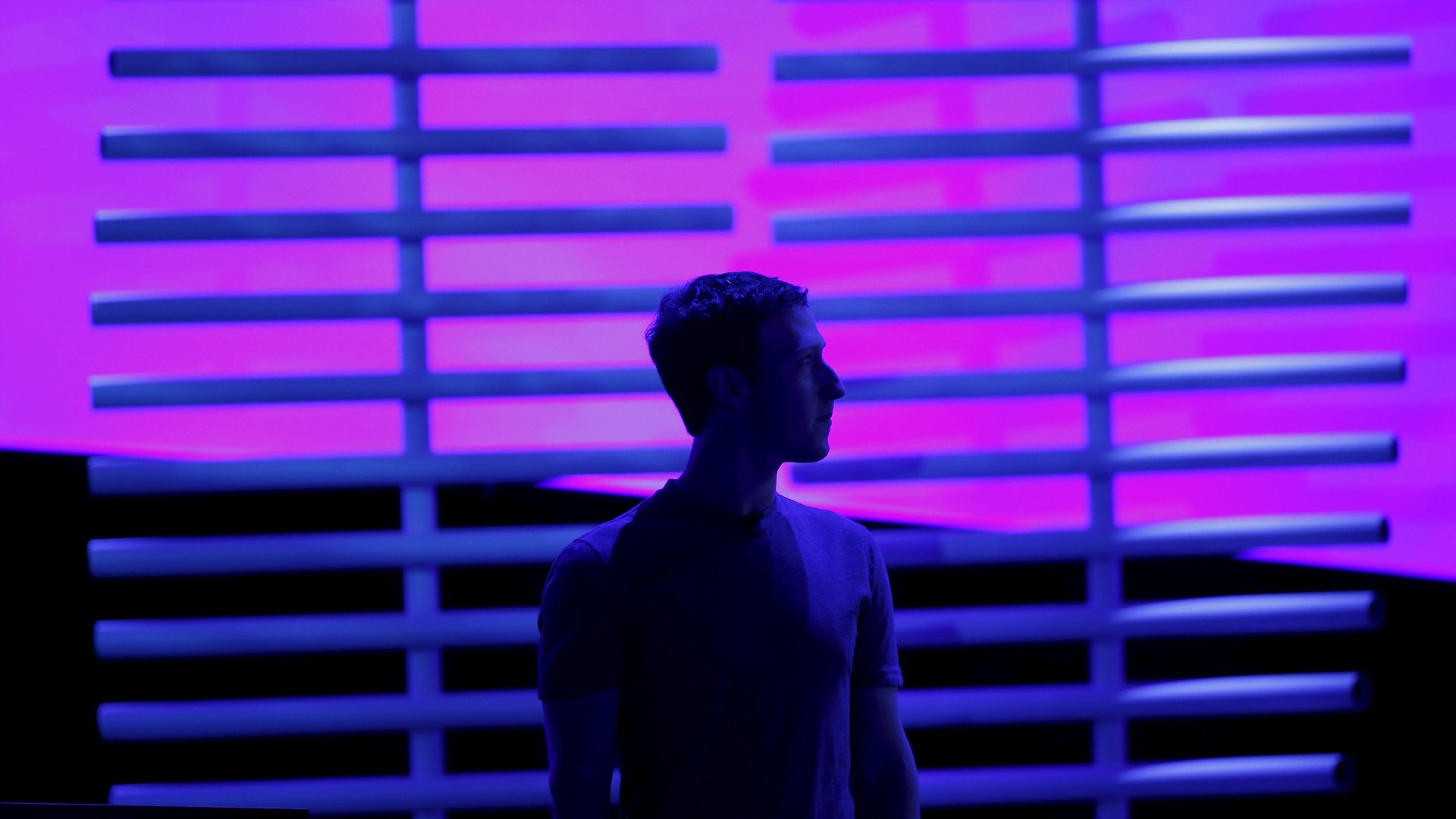
The timing, you could say, was propitious. When the fake news business broke—the Macedonian teens who were writing up pro-Trump garbage and making it go viral—Facebook got vilified for not doing anything to stop it spreading. We even got blamed for Trump winning the election. Mark had said publicly all along that censoring fake news wasn’t our job—we weren’t a media company, just a technology platform. That made the media furious: How could we say we weren’t a media company when we were one of the world’s biggest disseminators of media? You are a media company, they said. You should act like a media company. And that means making choices—conscious, deliberate, choices—about what to publish, and what not to. You created the problem: You have to be the solution.
And we said—though not all at once, and not explicitly, because it had to seem reluctant—“Fine by us.”
You’re following what I’m saying, right? This wasn’t accidental. Facebook didn’t bumble along for years believing that we were this dumb, neutral, judgment-free platform, and then suddenly wake up and smell the coffee when fake news appeared. We knew—well, Mark knew, and perhaps a couple of others—that the poisonous wells of hatred on the deep internet were going to fill up one day and spill over into the world of decent, liberal people. And that the only way we could protect those people was to first grow big enough, and then—once we were the only ones who could stop it—let them see the horror, so they would come crying, or actually, demanding, for us to rescue them.
Which we did. With the Facebook Journalism Project we gave the media new tools for publishing, trained their journalists, helped them reinvent their business models, and—not coincidentally—created a sharp divide between real news that was entitled to spread on Facebook, and fake news that wasn’t. That stuff went elsewhere, and that was fine. Elsewhere was the dangerous toxic marshes. We were the safe walled garden. If you got your news from Facebook, you knew it had been treated for toxicity.
And by the way, as everyone knows, we didn’t censor criticism of Facebook. The opposite, in fact. We opened up more; we invited journalists to come hang out in Menlo Park, talk to anyone, dig into our data studies. We made sure they could attack us all they wanted. It couldn’t hurt us by then. Once again, we were giving them the opposite of what Trump had given them, of what most any company or politician was giving them, and they felt that, if they could watchdog us, they could live with also being utterly dependent on us.
ƒ
The official story is that we got the idea for the system right around when Mark announced his candidacy. It’s true, that was the first time anyone dared say it out loud. But it really began back in 2010, after the first midterms of Obama’s presidency.
We had done that study—the famous voter turnout study. I think at the time it was the biggest social study ever conducted. On the day of the midterm election, 61 million voting-age Americans went to Facebook, and all of them, except a small control group, saw a button you could click that said “I voted.”
Some people were only shown the button. To others, though, we also showed pictures of their Facebook friends who had clicked it. We found that if you saw those pictures, you were 2% more likely to click “I voted” than people who didn’t see pictures. And—this was the incredible part—you were 0.4% more likely to actually go vote. Which we knew because we could cross-reference millions of people’s Facebook pages with public voting records. Even then, that stuff was so easy.
I remember the day a few weeks later when we got the preliminary results. It was late, I was with Mark and a few others in the canteen, and we were looking over the data and arguing about this and that. Everyone was blown away that we had gotten tens or perhaps hundreds of thousands more people to vote just by making a tiny little tweak to their Facebook pages. There was definitely discomfort too—someone said something about election-rigging, and this look went around, like, “don’t even say that.” Then someone said, wouldn’t it be great if people didn’t have to go to the polls to vote, if they could just vote through Facebook instead. Because that would increase turnout even more.
I happened to look over at Mark just then. I remember it so clearly. The movie The Social Network had come out a few weeks earlier, and one of my friends on the east coast had forwarded an article where the writer had contrasted Mark in real life to Jesse Eisenberg, who played him in the movie. Eisenberg, or “fake Mark,” was like a Roman character, the writer said; all “betrayal and excess.” Real Mark was Greek; he had “something of the teenage Stoic about him,” and even his face was “Greek sculpture, noble, featureless.”
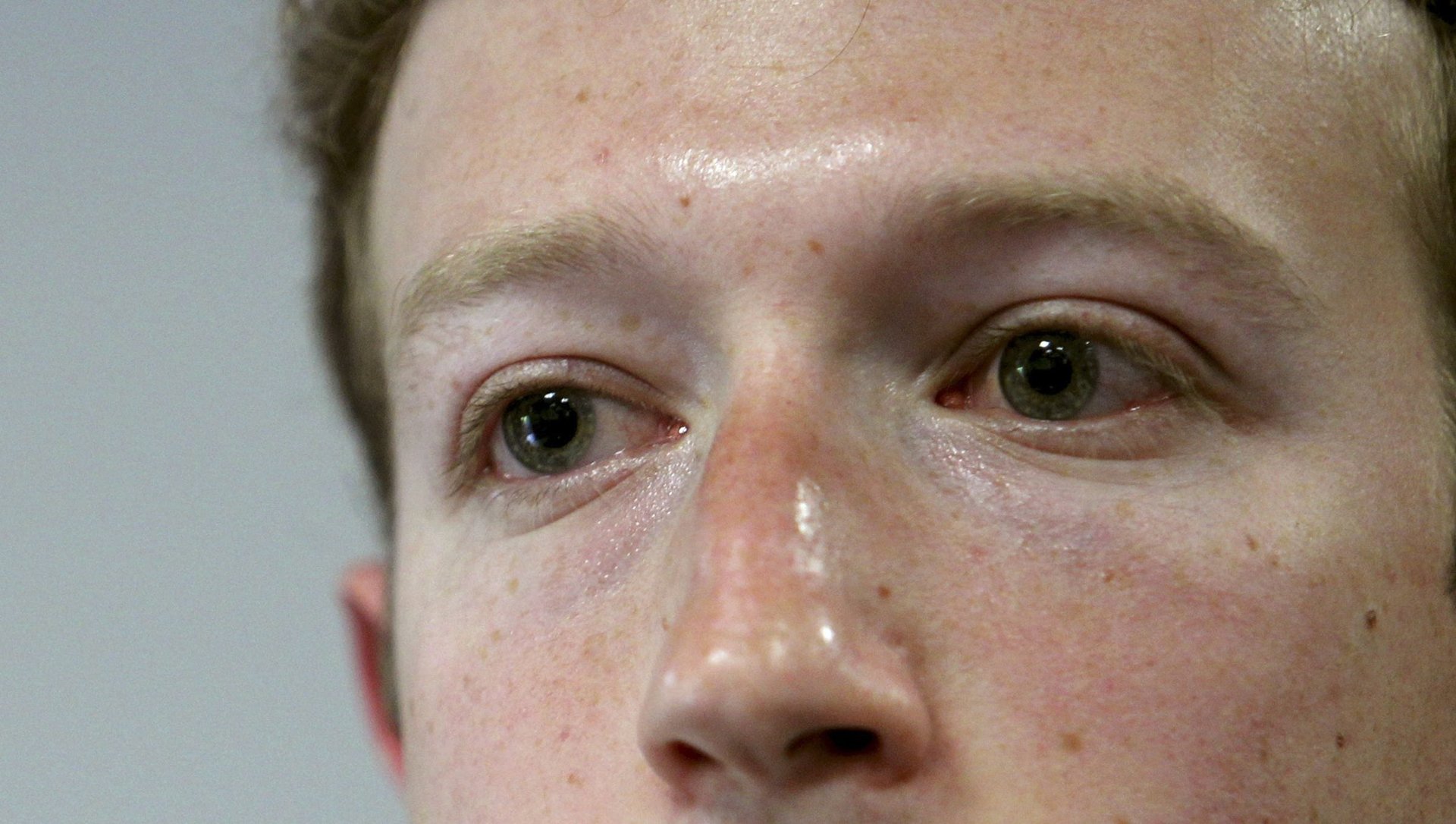
Of course, I knew Mark in real life, the grinning, hyperactive, intense Mark. At that moment in the canteen, though, he was like that Greek sculpture—an expressionless, frozen piece of marble. Even his eyes had become featureless pools, gazing somewhere indefinable. It was like a kind of fugue state. Mark’s body was still there, keeping his place in spacetime like a bookmark, but he was somewhere else. And I knew that when he went somewhere else like that, it was invariably to the future. He was racing ahead, playing out a development timeline. I tried to imagine what he was seeing, and had a sudden notion that I knew exactly.
The moment lasted maybe a couple of seconds, and then someone told Mr. Bright Idea to stop being an asshole, and everyone laughed again, Mark too, the impenetrable marble melting and collapsing back into goofy skin and flesh. He gave me only the barest of glances. And when he got up maybe half an hour later to leave, he tossed out a “good night” to the remaining handful of us without even looking at me. As he walked past my chair, he clapped me on the back, a casual, bro-y clap, but just a touch too casual, too lingering. And I knew I’d been right.
ƒ
I went straight to my cube and ran the numbers. Believe it or not, I can’t share them with you, even now, because we have NDAs like Fort Knox, and this was pre-IPO. But from the figures we make public you can get the picture.
At the time we had around 600 million monthly active users in the world. By the 2016 election it was more than 1.8 billion, with 230 million of those in the US and Canada, and… OK, I’ll spare you the math. Basically, by the time Trump got into office, there were about 245 million voting-age people in the US, and close to 200 million of them were using Facebook in some way at least once a month.
Now, guess how many Americans were registered to vote in 2016? Yep: 200 million. Of whom only 131 million actually voted in the Trump/Clinton race. Of course, the 200 million registered voters and the 200 million Facebook users probably weren’t the exact same 200 million. But still, if every user who was also registered had voted, turnout would have been 25-30 million higher, at least. Which, needless to say, would most likely have produced a different election result. (I’m not complaining. Like I say, Trump made Mark possible.)
That night in 2010, though we had only a third as many users, I could see this. I looked at the numbers and I could tell that, before too long, there would be more active Facebook users than active voters.
And we would know more about them than they knew about themselves.
There was a New Yorker profile of Mark that year. It noted that on his own Facebook page he listed “minimalism,” “revolutions,” and “eliminating desire” as his interests. In hindsight, it was prophetic. Though of course we haven’t exactly eliminated desire. It’s more that we’ve made it predictable, and explicit, and thereby brought it under control.
ƒ
Which is how we get to today. Of course, there are safeguards. We’ve built it so there’s basically no risk of a misvote. As the election approaches, you’ll start getting reminders—sporadic at first, then gradually more insistent, until you can’t even use one of our services without seeing them. The reminders will say: Based on the data Facebook has about you and your friends, we predict that you will vote for so-and-so. Is that right? And if you’re already a decided voter, you say yes or no. (We reckon less than 0.1% will say no, because our prediction models are that good.)
Then you can forget about it; your civic duty is done. On election day itself, Facebook will cast your vote for you. If you change your mind before then, you can always change your choice.
If, on the other hand, you’re undecided, you say so. Then we’ll keep nagging, right up until the polls close on election day. And then, if you still haven’t told us how you want to vote, we’ll cast a vote for you all the same.
You say that’s creepy? Look: In most elections, the undecideds will be less than 5% by election day. And of those, only a small fraction will get to the end of the day without telling us their decision. And even of those, we will still be able to predict, 999 times out 1,000, where they would have ended up. So while there may theoretically be people who never get around to telling us their choice and for whom we cast the wrong vote, they will be vanishingly few. By contrast, the number of new voters will be huge.
It’ll be like those Central Asian republics where they get 100% turnout, except it will be real.
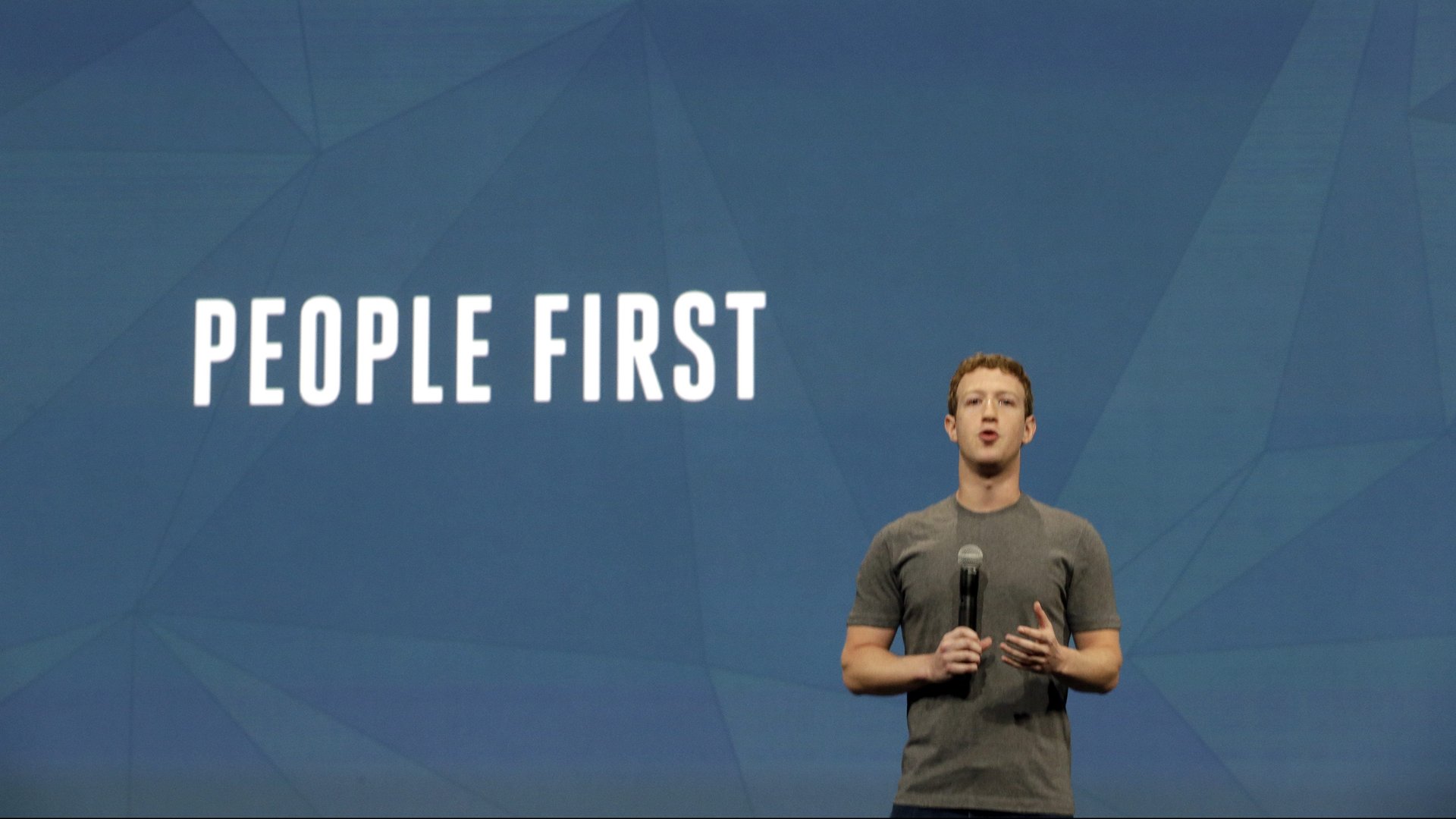
But wait, some people said—especially those pesky Europeans—this is crazy. Now Mark is running for re-election in 2024, and the votes will be cast by a system he built? But we’ve taken care of that too. Remember, this is all open and transparent to the media. We had experts in from the top US tech firms and a dozen foreign countries to crawl all over our code. We brought Edward Snowden out of solitary, where he’d been rotting ever since Putin gave him back to Trump in return for that deal on the Kuril Islands, and said we’d free him if he’d agree to be an ombudsman for the system. We let him monitor all of Mark’s communications—yes, all, I’m talking about the late-night selfies with Priscilla and everything—while we were building the project, to confirm that Mark wasn’t involved in any way. We wanted it to be unimpeachable. And it is.
ƒ
I give Mark the folder. He puts it on the desk and opens it. Inside is a single sheet of paper headed with the presidential seal.
Suddenly, I feel a kind of historical vertigo. There’s the desk, built out of wood salvaged from a 19th-century British ship, wood that for most of its 140 years has known only the kinds of paper documents that are sitting on it now. There’s the motion interface embedded in it, transforming it from a modest, physical, two-dimensional surface into the portal of an infinite, virtual, three-dimensional space. And there’s the Executive Order I’ve just given Mark, which looks just like any of the thousands that have sat on this desk before, but which, like the desk itself, is a bridge between the past and the future—between the virtual and the real, between implicit preferences and explicit choices, between the savage wilds of the old internet and the safe gardens of the new one. All in a small sheaf of wood pulp, resting atop a large chunk of wood. I put out a hand to the back of one of the chairs, just to steady myself a little.
He notices and glances up at me. His expression is calm. It is Greek stoicism, the counterpoint to the betrayal and excess of Trump’s Rome, a wanton empire that knew only how to play the accompanying music to its own destruction. We are cycling American democracy back to the Greek ideal, only better. The title below the seal on the Executive Order reads simply: Activating Democracy 3.0.
Why 3.0? Ancient Greece was 1.0: a good system, but with limited access privileges. A beta, if you prefer. Twentieth-century democracy was 2.0: a full-scale implementation, but too susceptible to gaming and abuse. In 3.0, none are enslaved or excluded, none are bullied or coerced, and every single citizen participates. This is the first truly robust build.
Of course, it’s still not perfect. Even when people can vote freely, they don’t always vote smartly, in line with their own best interests. But we built this in three years. If Mark wins a second term, and our models predict he will, that gives us another four. We’ve already talked about it; there’s a lot we can do to iterate.
Mark looks down at the sheet of paper and steadies the pen. For a few moments his face is marble again, his eyes bottomless wells. He’s back in the fugue state, racing far ahead, but this time I have no idea where he’s going or what he’s seeing. And then he signs.
Image credits, from top: Reuters/Jonathan Ernst, AP Photo/Paul Sakuma, Reuters/Kay Nietfeld, Reuters/Stephen Lam, Reuters/Robert Galbraith, AP Photo/Ben Margot